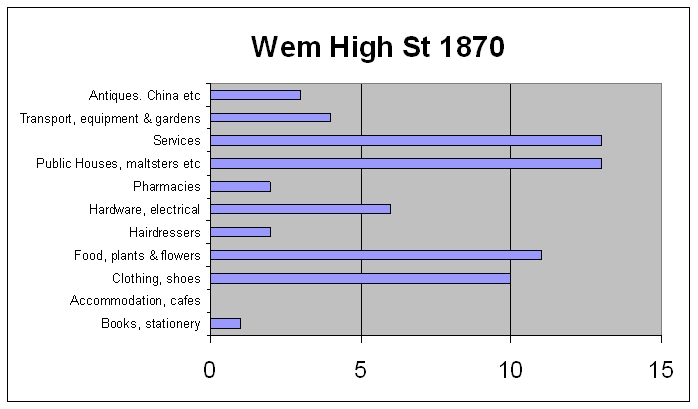
| History of Wem | Pre-railway | Wem in the mid 1890s | Commercial families |
Early C20th photos |
| Pre-WWII | Wem's Ancient Markets | Aston Street | High Street Buildings through the ages | |
1870- the coming of the railwayBy 1870, Wem had changed. The Crewe and Shrewsbury railway was completed in 1858 and the era of the stagecoach had ended.The route was so successful that the track was doubled in 1862. Freight movement no longer relied on horse-drawn carts and the Prees canal terminal at Quina Brook.The layout of the roads from Whitchurch and Aston had changed so that they met just south of the station and crossed the new line together. One incidental change affected horse racing. The old racecourse 3 miles to the west of the town had gone, as the course was needed for the railway trackbed to Shrewsbury.The High Street had changed too. Previously there had been very little development east of the New Street junction, in the area known as 'Maypole End' This now became Aston Street and the Albion Inn was built just opposite the station on the town side.George Venables was the landlord The Town Hall, burned down in the 17th century, was rebuilt in 1948 and was used, among other things, for the sittings of the county court. In addition to the Albion Inn, Aston Street had the following:
|

